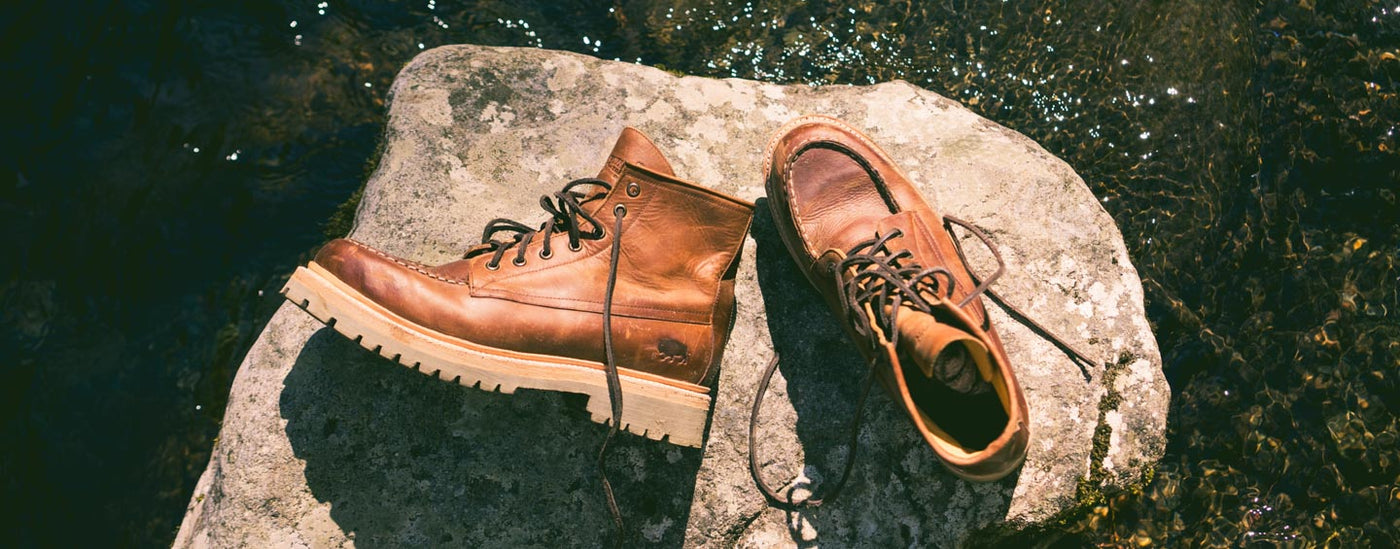Your Cart is Empty
You are €99,00 away from free shipping!
Your Cart is Empty
You are €99,00 away from free shipping!

There is a nearly universal principle that leads a man towards gratitude: whatever comfort he enjoys is in small or great part due to the toil of men before him. The roads we travel, for example, were once dirt and, in many cases, were mere trails for the buffalo which led to water and greener pastures. Civilizations formed along these trails, and through many blustering winters, summers of drought, and wars, a people remained and eventually prospered. Now, we drive through the old routes of the buffalo and wagons, and seldom give thought to all that had to occur to make safe our passage.
We find this principle in almost all of life, from our flannel shirts to the boots on our feet and often take for granted the comfort we experience. But for the men who marched, ran, fought and died pioneering our footwear, we would not have the modern day men's boot.
Prior to WWI men fought in whatever shoes they had available, or a uniformed shoe which was nothing more than a leather casket for the foot. The commanders of WWI had only a decade prior been fighting Indians on the plains. The contrast from rifles, six-shooters, and arrows to tanks, planes, and bombs cannont be overstated, but the war also brought with it a new fighting tactic, trench warfare, and along with it a new problem for soldiers: trench foot.
Posters like this began to emerge not long after the war began. Men had to inspect each other's feet, regularly, because if each man was left to inspect his own, he would rather stay on the field of battle than be taken away due to foot root.
Trench foot was essentialy the slow death of the foot. Prolonged marching followed by prolonged time in the filthy and watery trenches caused many soldiers to lose their feet and some their life. These "shoes" were not getting the job done. What the soldiers needed was a boot.
The 1912 infantry boot that most WWI soldiers wore into battle was more akin to a shoe.
So many soldiers were not lost to trench foot or removed from the field of battle that the footwear of the soldiers became a primary concern for military commanders. General John "Black Jack" Pershing, the eventual mentor to Eisenhower and Patton, to order a new type of "shoe" to be issued to U.S. infantry. The changes included thicker leather, waterproofing, and a thicker sole. Soldiers were so please to get this upgrade that it became known as the "Pershing" boot.
The "Pershing" boots of WWI. Notice the similarity to our modern day boots.
WWI and WWII made very clear the need to specialize the uniform to fit the battle. Boot productiion continued and several more styles of boot came from subsequent wars: The Jungle Boots of Vietnam with their cloth uppers and ventilation holes, the Jump Boots of Paratroopers with their tall and thick ankle support. However, the Trench Boot style is still a favorite. Though the wars had ended, factories were still setup for boot production on a mass scale. Over time the boots received softer insoles and linings, and began to take on an artisan appearance, incorporating different leathers such as bison.
Like, flannel, the Trench Boot found its way into every facet of life and remains a trusty companion of farmers and businessmen alike.
Men appreciate things that don't come easy. It is in our nature to admire that which came through skill more than luck. And so, we often find it hard to see the value in things that now seem to come about so readily. Developing that appreciation, however, comes not from looking at where we stand, but the road which we traveled to get here, and the lives of men who carried us a great deal of the way.
Orders shipped to Canada may be subject to import duties, tariffs, and taxes charged by Canadian customs. These fees are not included in our prices or shipping costs. You will be responsible for any additional charges upon delivery. Please review local customs regulations before placing your order.

